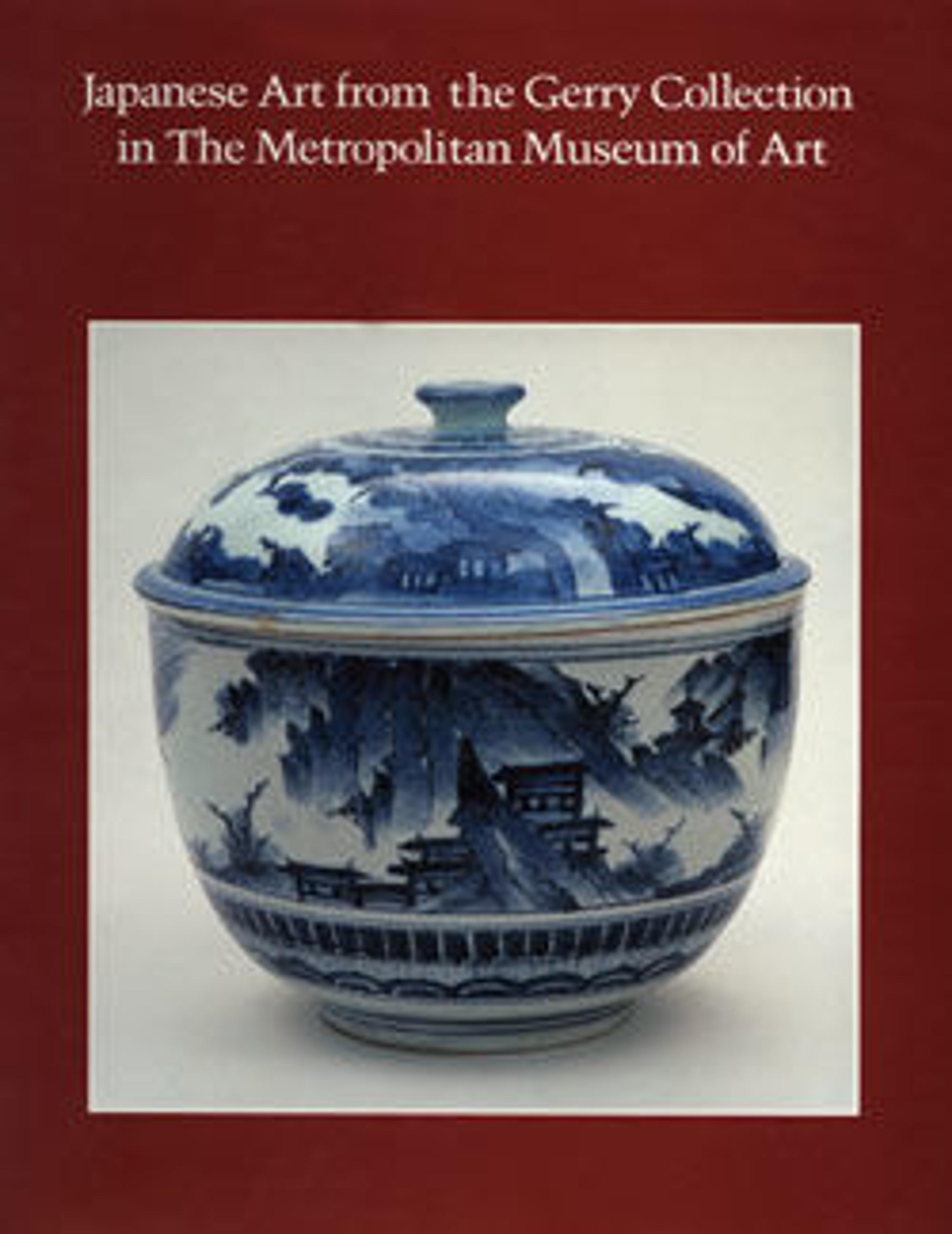Plate with Design of Fans
This handsome high-footed dish is a characteristic product of the nineteenth-century revival of Ko Kutani porcelain. The body is dense and very heavy, and it is crudely and boldly produced. The design is strongly drawn in the well and somewhat cursorily in the back. If there is a glaze under the coarse dark enamels, it is very thin and concealed by the overall decoration. The design of scattered fans that boldly defies the confines of the round plate is characteristic of these celebrated, if problematic, wares.
Controversy surrounds the definition of wares termed Ko Kutani (Old Kutani). The best known are large plates that feature bold, decorative designs rendered in a limited palette of blue, green, yellow, and aubergine, with touches of red. The pigments are so thickly applied that they often form deep pools of glossy color. It is now thought that Ko Kutani porcelain was made at the Hizen kilns on Kyushu, rather than at the Kutani kilns in northwestern Japan. After the 1660s, this ware was superceded by the more delicate wares of Kakiemon and Nabeshima.
Controversy surrounds the definition of wares termed Ko Kutani (Old Kutani). The best known are large plates that feature bold, decorative designs rendered in a limited palette of blue, green, yellow, and aubergine, with touches of red. The pigments are so thickly applied that they often form deep pools of glossy color. It is now thought that Ko Kutani porcelain was made at the Hizen kilns on Kyushu, rather than at the Kutani kilns in northwestern Japan. After the 1660s, this ware was superceded by the more delicate wares of Kakiemon and Nabeshima.
Artwork Details
- Title:Plate with Design of Fans
- Period:Edo period (1615–1868)
- Date:ca. 1650
- Culture:Japan
- Medium:Porcelain with overglaze enamels (Hizen ware, Ko Kutani style)
- Dimensions:Diam. 8 5/8 in. (21.9 cm); H. 7/8 in. (2.2 cm); Diam. (foot) 5 1/16 in. (12.9 cm)
- Classification:Ceramics
- Credit Line:Dr. and Mrs. Roger G. Gerry Collection, Bequest of Dr. and Mrs. Roger G. Gerry, 2000
- Object Number:2002.447.101
- Curatorial Department: Asian Art
More Artwork
Research Resources
The Met provides unparalleled resources for research and welcomes an international community of students and scholars. The Met's Open Access API is where creators and researchers can connect to the The Met collection. Open Access data and public domain images are available for unrestricted commercial and noncommercial use without permission or fee.
To request images under copyright and other restrictions, please use this Image Request form.
Feedback
We continue to research and examine historical and cultural context for objects in The Met collection. If you have comments or questions about this object record, please contact us using the form below. The Museum looks forward to receiving your comments.
